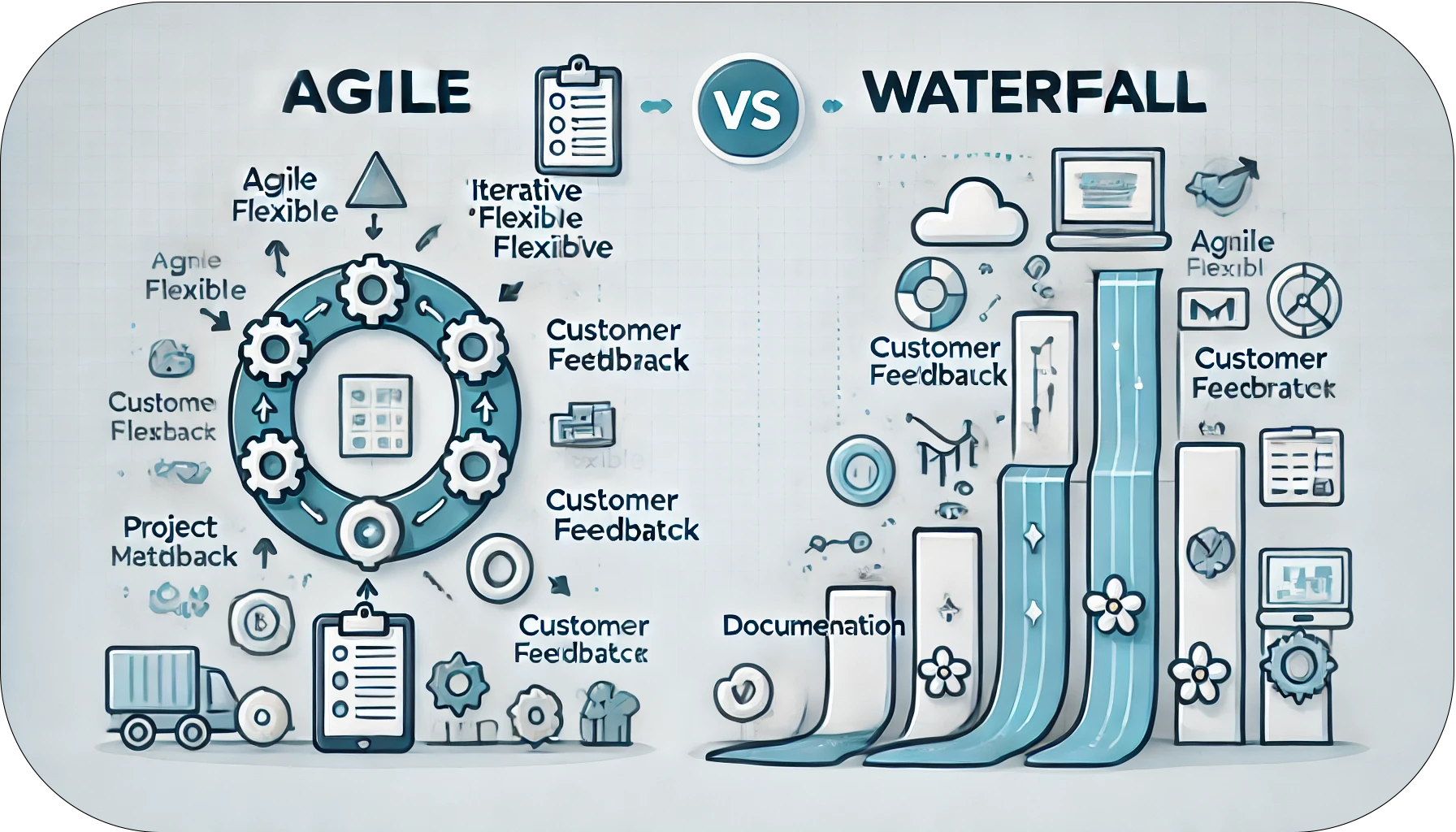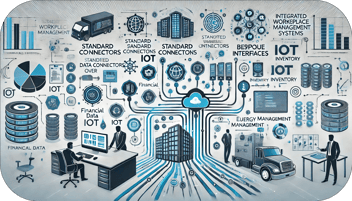Project management methodologies provide structured approaches to planning, executing, and completing projects. Two of the most widely used methodologies are Agile and Waterfall. Each has its own set of advantages and disadvantages, making them suitable for different types of projects.
Table of Contents
- Agile Methodology
- Waterfall Methodology
- FacilityForce's Use of Agile and Waterfall
- Typical Waterfall Project Activities at FacilityForce
Agile Methodology
Advantages:
- Flexibility: Agile allows for changes and adjustments throughout the project lifecycle, making it ideal for projects with evolving requirements.
- Customer Collaboration: Continuous feedback from stakeholders ensures that the project meets their needs and expectations.
- Incremental Delivery: Agile delivers work in small, manageable increments, allowing for early detection of issues and quick adjustments.
Disadvantages:
- Scope Creep: The flexibility of Agile can sometimes lead to scope creep if changes are not managed properly.
- Resource Intensive: Agile requires constant involvement from the project team and stakeholders, which can be demanding on resources.
- Less Predictability: The iterative nature of Agile can make it difficult to predict timelines and costs accurately.
Best Suited For:
- Projects with dynamic requirements and a need for rapid development and deployment.
- Enhancing or developing new products and features, where ongoing feedback and iteration are crucial.
Waterfall Methodology
Advantages:
- Structured Approach: Waterfall follows a linear and sequential approach, making it easy to understand and manage.
- Clear Documentation: Each phase is well-documented, providing a clear roadmap and ensuring that all requirements are captured.
- Predictability: Waterfall allows for accurate prediction of timelines and costs, as each phase is completed before the next begins.
Disadvantages:
- Inflexibility: Once a phase is completed, it is more difficult to go back and make changes, making Waterfall less adaptable to changing requirements.
- Longer Timelines: The sequential nature of Waterfall can lead to longer project timelines, especially for complex projects.
Best Suited For:
- Projects with well-defined requirements and a clear scope.
- Long-term professional services implementations, where detailed planning and documentation are essential.
FacilityForce's Use of Agile and Waterfall
At FacilityForce, we utilize both Agile and Waterfall methodologies to suit different project needs. Agile is particularly effective for enhancing or developing new products and features, allowing us to adapt to changes and deliver value incrementally. On the other hand, the Waterfall methodology is well-suited for long-term professional services implementations. These projects involve gathering customer requirements and business processes, and then configuring our custom off-the-shelf (COTS) software to meet those needs. The structured approach of Waterfall ensures thorough documentation and clear milestones, which are crucial for complex implementations with extensive customer interaction.
Typical Waterfall Project Activities at FacilityForce
- Kickoff: The project officially begins with a kickoff meeting to introduce the team, outline the project scope, and set expectations.
- Conceptual Training: Initial training sessions to familiarize the customer with the system's capabilities and features.
- BPAs/Process Diagrams/SOPs/Approvals: Business Process Analysis (BPAs), creation of process diagrams, Standard Operating Procedures (SOPs), and obtaining necessary approvals.
- Sub-projects Kickoff (Interfaces, Engage, etc.): Initiating sub-projects related to interfaces, engagement, and other specific areas.
- Data Collection/Data Load: Gathering and loading data into the system, ensuring all necessary information is accurately captured.
- System Setup: Configuring the system according to the customer's requirements and business processes.
- Walkthrough 1: Conducting the first walkthrough to review the system setup and gather feedback.
- Revisions and Additional System Setup (e.g., Security Permissions and Queries/Dashboards): Making necessary revisions and additional configurations, such as setting up security permissions and creating queries and dashboards.
- Walkthrough 2: Conducting a second walkthrough to review the revised setup and ensure all requirements are met.
- Training (Document Development/Train the Trainer/User Training): Developing training documents and conducting Train the Trainer and user training sessions.
- Go Live: The system goes live, and the customer begins using it in their daily operations.
- Post Go Live: Providing ongoing support and addressing any issues that arise after the system is live.
By leveraging both Agile and Waterfall methodologies, FacilityForce ensures that we can effectively manage a wide range of projects, delivering high-quality solutions that meet our customers' needs.
Would you like to learn more?
Related Resources:
- Facilities Management Overview
- What is the Best IWMS Software for Government?
- The State of Alaska Tackles Statewide Deferred Maintenance
- Why Capital Budgeting Software is Critical in Government Facilities
- Three Keys to Effective Space Management
- Facilities System Integration
- FacilityForce's IWMS Solution




